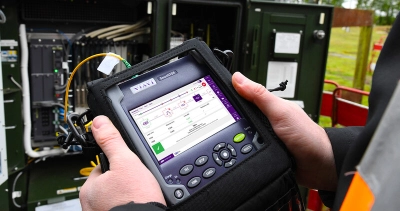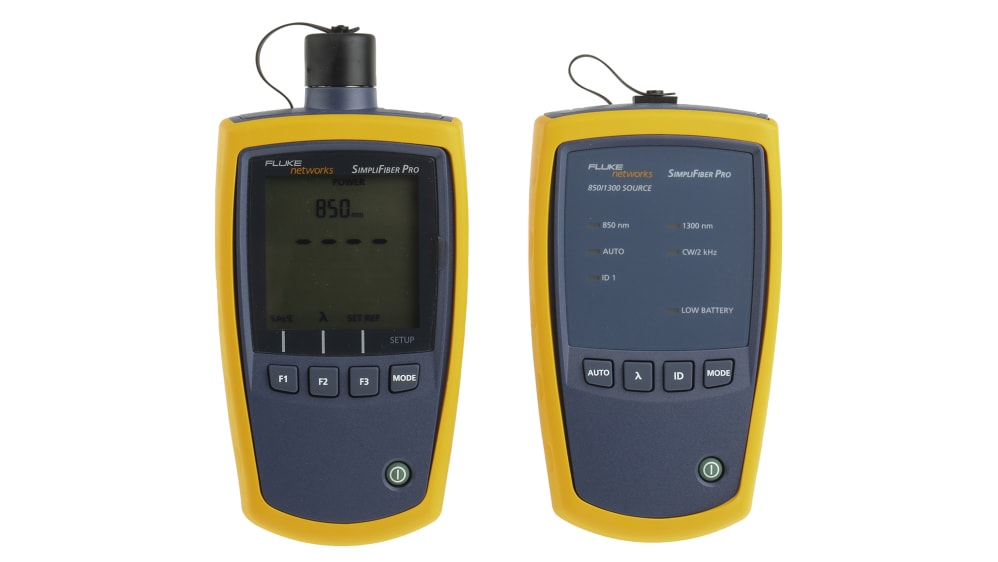Advanced fibre testing equipment detects defects and maintains fibre integrity.
Checking Out the Conveniences of Optical Fiber Evaluating for Enhanced Interaction Systems
The value of optical fibre screening in modern interaction systems can not be overemphasized, as it offers as a structure for ensuring network integrity and efficiency. This aggressive screening approach has extensive effects for signal quality and functional performance, raising the concern of just how these practices contribute to long-lasting sustainability in an ever-evolving technical landscape.
Significance of Optical Fiber Screening
The importance of optical fibre screening can not be overstated in today's data-driven atmosphere. As companies progressively depend on high-speed data transmission for day-to-day operations, the honesty and efficiency of optical fibre networks are paramount. Testing makes certain that these networks can support the substantial amounts of information produced and transmitted perfectly, promoting efficient interaction and connection.
Optical fiber screening offers several critical functions, consisting of confirming installment top quality, recognizing possible mistakes, and establishing total system efficiency. Normal screening can protect against pricey downtimes and solution disturbances, allowing organizations to maintain functional connection. Moreover, it assists in compliance with industry requirements and guidelines, making sure that fiber optic setups satisfy called for requirements for safety and security and dependability.
In addition, testing can enhance the longevity of fiber optic systems. By proactively recognizing problems such as signal loss, attenuation, or adapter failures, organizations can address troubles prior to they intensify, thus extending the life of their infrastructure. In recap, optical fibre testing is not merely a technical requirement however a calculated financial investment that improves network integrity, maximizes efficiency, and ultimately sustains the growth and performance of modern communication systems.
Secret Examining Approaches

OTDR is a vital method used to identify mistakes, step splice losses, and evaluate the overall integrity of a fibre optic web link. By sending out a pulse of light down the fiber and assessing the shown light, specialists can identify locations of mistakes and assess the network's performance over long distances.
Insertion loss testing gauges the quantity of signal loss that occurs when light go through a link or splice. This method is critical for verifying that connections fulfill specific loss limits, which is crucial for keeping optimal performance in interaction systems.
Optical return loss screening quantifies the amount of light reflected back in the direction of the source because of flaws in the fiber or links. High return loss worths indicate much better efficiency and reduced signal degradation.
With each other, these screening approaches offer a detailed evaluation of fiber optic networks, guaranteeing their reliability and performance in varied interaction applications.
Influence On System Performance
Effective optical fibre testing directly affects the total performance of communication systems. By making sure the honesty of fibre optic wires, testing determines possible mistakes such as depletion, splice loss, and connector misalignment. These problems can substantially break down signal quality, leading to disturbances and reduced information transmission rates.

Furthermore, imp source normal optical fiber testing adds to long-term system sustainability. It makes it possible for early discovery of damage, permitting for timely upkeep and upgrades before significant failings occur. This not just prolongs the life-span of the infrastructure yet also makes sure that communication systems stay affordable in terms of performance.
Cost-Effectiveness and Performance
Cost-effectiveness is a critical consideration in the implementation and upkeep of optical fibre networks. Applying robust optical fiber screening procedures can dramatically minimize functional costs by determining concerns before they intensify into major troubles. fibre testing equipment. By discovering mistakes, depletion, and other performance barriers early, organizations can prevent pricey repairs and downtime, which can interfere with services and bring about profits loss
In addition, efficient testing techniques simplify the installation process, enabling service technicians to work a lot more properly. This translates to lower labour prices and faster task conclusion times. Advanced screening devices, such as Optical Time Domain Name Reflectometers (OTDRs), allows an exact assessment of fibre quality, guaranteeing that just optimum materials are made use of, consequently reducing waste.
Regular screening likewise contributes to better source allotment. By understanding the network's efficiency, companies can make informed decisions concerning upgrades and growths, guaranteeing that financial investments are made where they are most needed. In summary, optical fiber testing improves cost-effectiveness and efficiency, sustaining the long-term sustainability and competitiveness of interaction systems in a significantly demanding market.
Making Certain Long-Term Dependability
Implementing strenuous optical fiber screening not just enhances expense savings and functional effectiveness but additionally plays a critical duty in guaranteeing the lasting reliability of interaction networks. Consistent screening methods, including attenuation and bandwidth evaluations, help recognize prospective degradation in fiber performance prior to it causes service disruptions.
By using sophisticated testing methods, network drivers additional reading can identify mistakes or weaknesses in the fibre infrastructure, enabling timely removal. This positive method lessens downtime, guaranteeing that interaction systems continue to be functional and reliable. Routine screening adds to the development of a much more durable network, as drivers can adjust and optimize their facilities based on real-time data insights.
Additionally, making sure compliance with market requirements via optical fiber screening strengthens the high quality and integrity of the entire communication system. This adherence not only bolsters self-confidence amongst stakeholders yet likewise lines up with regulative requirements, which are progressively rigid.
Final Thought
Finally, optical fiber screening works as an essential element in improving communication systems. By using numerous screening approaches, such as OTDR and insertion loss evaluations, networks can accomplish ideal performance and integrity. The aggressive recognition of faults not just improves signal top quality yet likewise decreases downtime, eventually adding to cost-effectiveness and functional performance. Adherence to industry criteria promotes stakeholder confidence, guaranteeing the long-term sustainability of interaction facilities in an increasingly data-driven landscape.